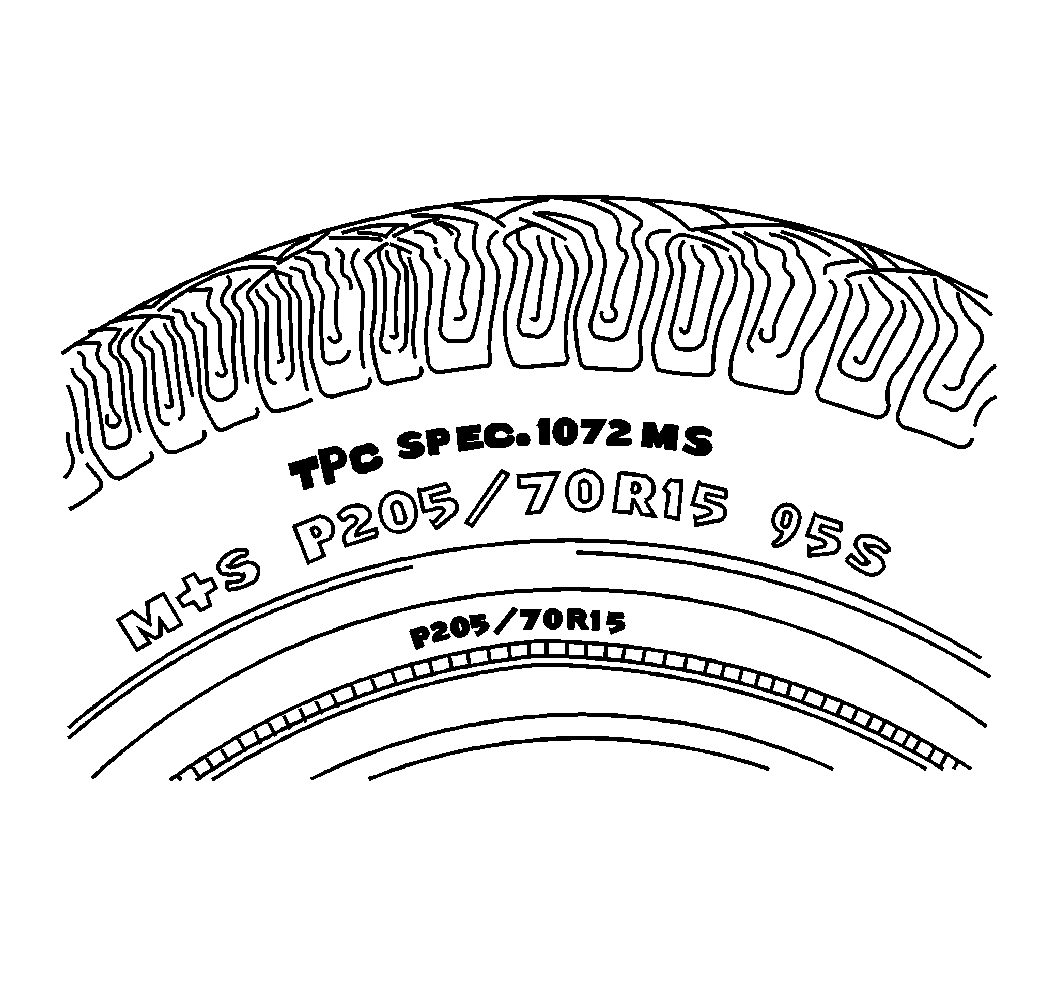
A Tire Performance Criteria (TPC) specification number is molded in
the sidewall, near the tire size on all original equipment tires.
This specification number assures that the tire meets GM's performance
standards for the following:
| • | Other performance standards |
Usually, a specific TPC number is assigned to each tire size.
Caution: Do not mix different types of tires on the same vehicle such as radial,
bias, and bias-belted tires except in an emergency, because the vehicle handling
may be seriously affected and may result in loss of control. This caution
does not apply to the compact spare that is furnished with the vehicle.
Replacement tires should be of the same size, load range and construction
as those originally on the vehicle. This can best be accomplished by using
tires of the same TPC specification number. The use of any other tire size
or construction type may seriously affect tire ride, handling, speedometer/odometer
calibration, vehicle ground clearance and tire clearance to the body and chassis.
This does not apply to the spare furnished with the vehicle.
Install new tires in pairs on the same axle. If it is necessary to replace
only one tire, the replacement tire should be paired with the tire that has
the most tread. This is done in order to equalize braking traction.
Although they may appear different in tread design, tires built by different
manufacturers with identical TPC specification numbers can be intermixed on
the same vehicle.
Tires should be replaced when the following conditions are present:
- The tires are worn to a point where 1.6 mm (0.063 in)
or less tread remains.
The cord or fabric is showing.
In order to help detect this condition, tires have built-in tread wear
indicators that appear between the tread grooves when the tread is worn to
1.6 mm (0.063 in) or less.
When the indicators appear in two or more adjacent grooves at three
spots around the tire, the tire should be replaced.
- The tread or sidewall is cracked, cut or snagged deeply enough
to expose the cord or fabric.
- The tire shows the following characteristics:
| • | Slight sidewall indentations are normal and should not affect the ride. |
- The tire has the following flaws that cannot be correctly repaired
because of the size or location of the damage:

